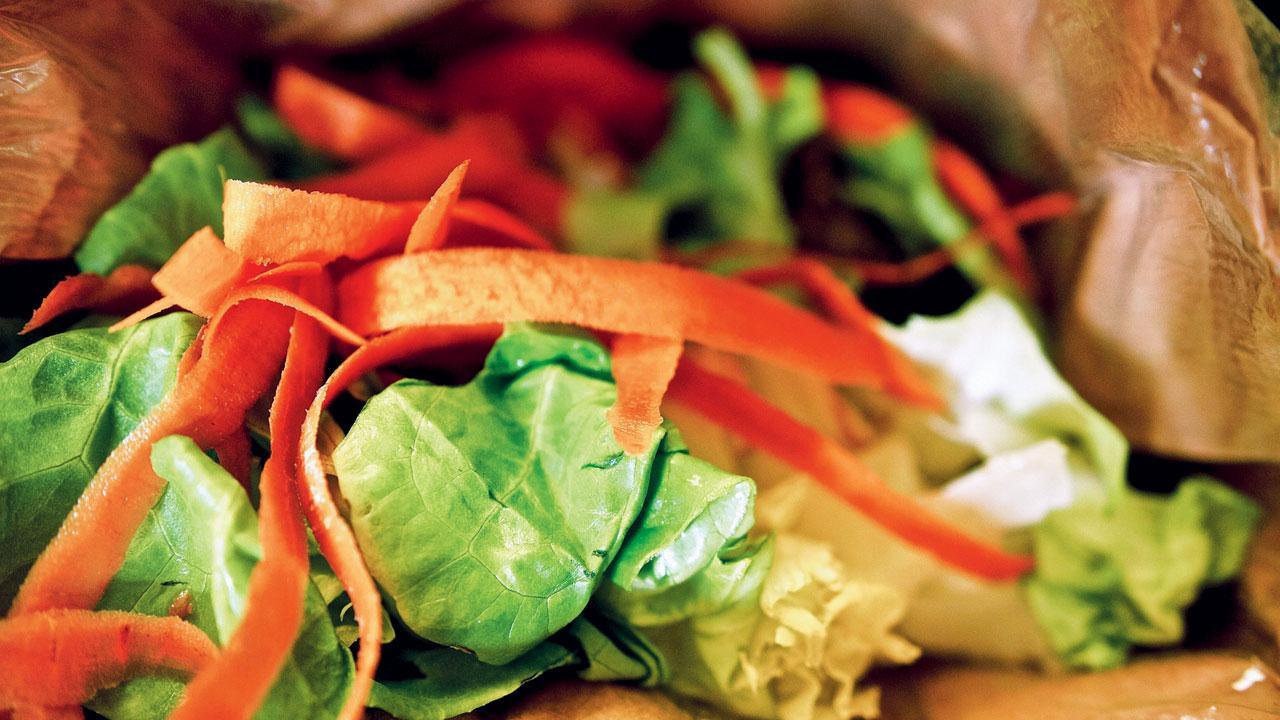After a global study revealed shocking statistics about the food wastage we produce as a species, four city chefs share tips on how we can stop adding to the problem

Instead of throwing vegetable peels, used them to create stocks and chutneys
Check this. If all the food that was wasted at the consumer level in 2019 - 931 million tonnes to be precise - were packed into 40-tonne trucks parked bumper-to-bumper against each other, the line would be long enough to encircle the Earth seven times around. That’s one of the many shocking revelations made in The Food Waste Index Report 2021, recently released by the United Nations Environment Programme. The report also says that 121 kg of food is wasted per person each year, of which 74 per cent is disposed of by households. This, when the world has 690 million people reeling from hunger, a number that will only rise due to the pandemic. So, what can we do to ensure that we are part of the solution, and not the problem? Four city chefs have the answers to how we can reduce the waste we produce in our kitchens.
ADVERTISEMENT
Of the 121 kg of food thrown away each year for every person, more than half is disposed of by households
Save your peels
Most of us peel vegetables and throw the scraps into the bin. Don’t do that. Instead, save the peels from carrots, potatoes, etc, and add them to a homemade broth for extra flavour, advises Amol Phute, chef de cuisine at Bandra eatery Bastian. “Also, reserve kale stalks for soups that call for chopped greens, and make jams from apple peels and cores, apricot peels and strawberry tops,” he suggests. While storing, ensure that meat and poultry is kept separately from vegetables to increase their shelf life. And Phute also warns against overbuying to maintain the freshness and quality of your ingredients, thereby reducing wastage.
Widen your culinary lens
Remember that everything that is there in a fruit or a vegetable is edible in some way or the other. That is the main advice that Chef Gresham Fernandes, culinary director of Impresario Handmade Restaurants, has to offer. Banana peels can be turned into a chutney that is a favourite among the Sindhi community. The middle stems and leaves of cauliflowers can be made into a bhaji. Pineapple peels are used for making a somewhat fermented drink called tapesh. In fact, you don’t have to throw the bones and heads of fish either. Use them to make a stock instead. Fernandes says, “You basically have to look at cuisine from a poor person’s perspective. If you have extra rice in the fridge, make fried rice with it. Have leftover daal? Add some tomatoes, puree it and turn it into a soup instead. Start looking at food with a wider lens.”
A lifestyle change
Potato skins needn’t just be used for broths. They can also be used to make excellent chips, suggests Vidit Aren, executive chef at Slink and Bardot, a restaurant in Worli. He also says that leftover bread can be dried over a day or two, and then blended into a powder, which can be used to make muffins and rustic bread loaves. Diced broccoli stems with the outer skin peeled off make for a great addition to a stir-fry. But what’s most important, Aren says, is to strive towards a lifestyle change since sustainability, waste management and responsible living are all interconnected. “Once you make that shift, you will find your own hacks suited to where you live and what your surroundings are like,” he says.
Storing tactics
There’s of course a lot you can do with peels in the kitchen, whether it’s making stocks, chutneys or jams. But chef Amarinder Sandhu of Indian eatery Iktara suggests that you can also use them to create compost and grow vegetables if you have the space. She also warns against overbuying ingredients. “We are extremely diligent about shopping for ingredients at commercial kitchens in order to cut our costs. So, plan your meals for the week, and buy the items accordingly,” she says. Sandhu adds that when it comes to storing, anything that needs to be thawed should be placed in the bottom shelf in a perforated pan with a plate underneath it, so that drippings don’t contaminate the other stuff in the fridge. “I also like to keep my coriander in water, like flowers. Not only does this preserve them, but they also look nice, encouraging you to cook something with them.”
 Subscribe today by clicking the link and stay updated with the latest news!" Click here!
Subscribe today by clicking the link and stay updated with the latest news!" Click here!






